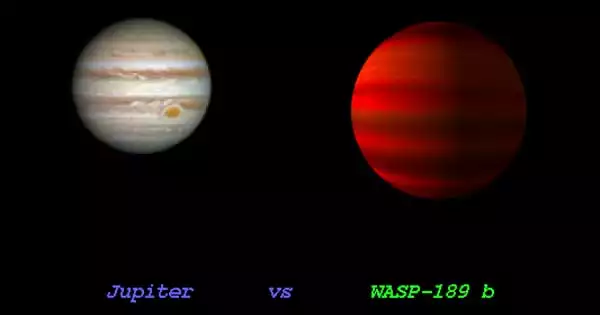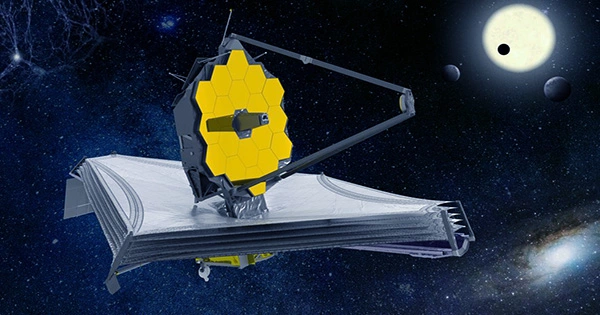WASP-189 b is a gas giant that is roughly 1.5 times the size of Jupiter. It is also known as HD 133112 b, an extrasolar planet with an orbital period of less than three Earth days around its host star, WASP-189 (HD 133112), and is located approximately 322 light-years away in the Libra constellation. It is roughly 20 times as close to its host star as the Earth is to the Sun. It was discovered in 2018, and CHEOPS observed it in 2020.
WASP-189 b is one of the hottest known exoplanets, with CHEOPS scientists measuring its temperature to be around 3200 degrees Celsius. It’s a massive blue star 322 light-years away from Earth, and it’s wider at its equator than at its poles because it’s spinning so fast that it’s being pushed outwards around its equator.
Discovery and observations
WASP-189 b was discovered for the first time in 2018. Astronomers used CHEOPS to observe it in 2020. The planet’s brightness could be measured based on a passage behind its host star (occultation), and its temperature was estimated to be 3,200 °C (5,790 °F; 3,470 K).
WASP-189b, located approximately 322 light-years away in the constellation Libra (the weighing scales), is more than one and a half times the mass of Jupiter, the Solar System’s largest planet. The planet is particularly intriguing because it is a gas giant that orbits its host star very close. It circles its star in less than three days and is 20 times closer to it than the Earth is to the Sun.

The new and high-precision CHEOPS observations allow for a substantial revision of the planetary parameters, as well as the geometry of the planet’s orbit: by combining updated stellar parameters with transit data, scientists discovered that the planet is 15% larger than previously thought, and thus less dense; they also discovered that the planet’s orbit is tilted away from the stellar equator, with the planet passing over the star’s poles as it circles the star.
The radius is 1.6 times that of Jupiter based on transit in front of its host star. During the transit, the light curve revealed that the star is larger and cooler at its equator than at its poles, making the poles of the star appear brighter. WASP-189b’s orbit is highly inclined, passing close to the star’s poles, which adds to the asymmetry.
Scientists believe the planet is not very reflective because there are no clouds on its dayside: This is not surprising given that theoretical models predict that clouds cannot form at such high temperatures. WASP-189b’s star is very different from the Sun. The star is much larger and more than two thousand degrees Celsius hotter than our Sun. Because it is so hot, the star appears blue rather than yellow-white like the Sun. There are only a few planets known to orbit such hot stars, and this system is by far the brightest.
















